Creating Renaissance-style beauty... in an old sausage factory
13 August 2018
Star artist Raqib Shaw rarely leaves his London home-come-studio. Just what goes on behind closed doors of the former sausage factory in Peckham? BBC Four's What Do Artists Do All Day spent a year with Shaw to discover the elaborate process involved in creating the Renaissance-inspired paintings currently on show at the Scottish National Gallery Of Modern Art.
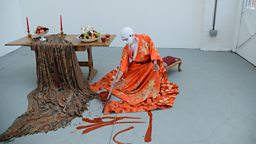
Shaw has been fascinated with Renaissance paintings since before he became a artist. "I remember the first Renaissance works that I saw in New Delhi at bookstores," he says. "When you know nothing about Western art, and you see these images, they’re absolutely incredible."
His passion only increased when he got to see some of these works up close after moving to London. He says: "When I first saw the [Lucas] Cranach at the National Gallery, which was Venus and Cupid, what struck me was that Venus is wearing the hat of the day. So it is a fashionable lady of that particular moment in time, and you see that marriage of antiquity with so-called current fashion - I thought that was a fabulous painting."
At his new exhibition in Edinburgh Shaw's art will temporarily sit alongside that of Cranach, a German Renaissance painter. He says: "I never imagined that my painting would ever be shown next to the original, and that really means a lot to me."
When you know nothing about Western art and you see these images, they’re absolutely incredible.

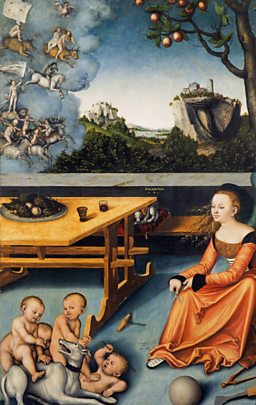
But Shaw's pieces are quite different to the Renaissance works which he references. He says: "I do hope that my interpretation has the so-called formal qualities that we see in the original Cranach, but at the same time I think this is more experimental and it’s more fun.
"All my paintings are doing is showing my particular journey from the cradle to the grave. I chose the Cranach painting because melancholy is by far the most sophisticated of the human emotions. Melancholy is accepting the fleeting nature of life."
I think this is more experimental and it’s more fun.

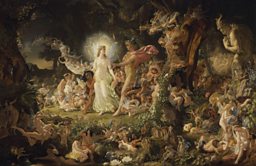
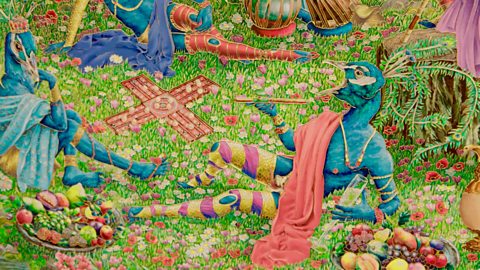
Raqib and his team replenish the charred remains of his opulent salon
Raqib's leads a team of his assistants as they restore his salon room to its former glory.

Constant Kashmir
Kashmir Danaë (After Jan Gossaert) shows Shaw showered in flames - and it was completed just hours before a fire ravaged part of his home. He says: "It's a fabulous scenario of life imitating art."
Shaw is no stranger to trauma: "Don't forget, I come from Kashmir. I survived the civil war. I've seen loss and helplessness. I could not stay back in Kashmir and fight for independence. But what I can do is capture the beauty and the pain of Kashmir though the painting."
Shaw was born in Calcutta but was raised in Kashmir, a Himalayan region which has been a flashpoint between India and Pakistan for over six decades, before moving to New Delhi and then emigrating to London.
He remains traumatised by his Kashmiri childhood. He says: "Overnight, Kashmir, from being an absolute paradise on earth, turned into an absolute living nightmare and hell, and it’s very sad to see that.
"One of my most vivid memories was going to one of the shrines in the morning with my mother, and it was one of what one would call separatists, and he was shot.
"There was warm blood along the steps of the shrine, and accidentally I put my foot in it and I will never forget that feeling – that smell and the feeling of warm blood under my feet.
"It’s very hard to see so many young people die for nothing. It’s very, very sad."
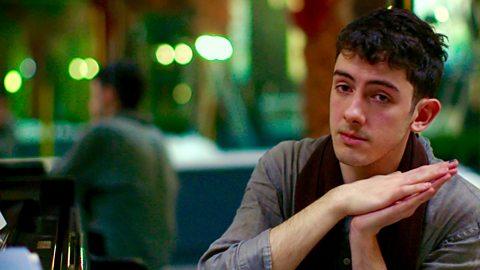
Adam the Pianist
Adam discusses life inside the sausage factory of Raqib Shaw.
Over the year that the BBC's cameras were following Shaw, he produced five paintings. These are not the work of Shaw's hand alone – he employs a large team, including painters, photographers, sculptors, musicians and even a florist. He says: "If I was to paint a painting on my own, a six foot by four foot painting would take me 11 months.
"We have people who help me with the trees, with the flowers - it just depends on individual specialisation. This is the closest you can get to the most incredible Renaissance atelier [a workshop or studio]."
With their help Shaw says he is able to create the perfect environment for making art: "It's not, 'How important is this space?'. It should be more like, 'What does this space give me in terms of cutting off the rest of the world?'
"I'm left in my own psychological sphere, trying to do some decent paintings. I do not consider myself a so-called artist. I just tried to make the best of whatever situation I'm given. Let's not forget, I'm a refugee from Kashmir."
I just tried to make the best of whatever situation I'm given. Let's not forget, I'm a refugee from Kashmir.
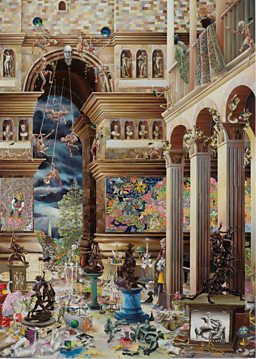

-
![]()
The Big British Asian Summer
A whole season of programmes across the BBC.
What Do Artists Do All Day? Raqib Shaw is on BBC Four at 7.30pm on Monday 13 August and will be available on BBC iPlayer for 30 days. Reinventing the Old Masters is at the Scottish National Gallery of Modern Art in Edinburgh until 28 October.
Current exhibitions
-
![]()
Streetwise art
How Keith Haring made New York City his canvas.
-
![]()
London calling
How the capital inspired Vincent van Gogh.
-
![]()
The original emoji
Why The Scream is still an icon for today.
-
![]()
Da Vinci decoded
See the Renaissance master's drawings in twelve UK cities.
More from BBC Arts
-
![]()
Picasso’s ex-factor
Who are the six women who shaped his life and work?
-
![]()
Quiz: Picasso or pixel?
Can you separate the AI fakes from genuine paintings by Pablo Picasso?
-
![]()
Frida: Fiery, fierce and passionate
The extraordinary life of Mexican artist Frida Kahlo, in her own words
-
![]()
Proms 2023: The best bits
From Yuja Wang to Northern Soul, handpicked stand-out moments from this year's Proms









